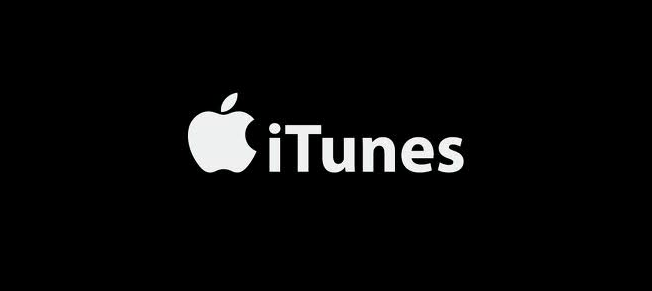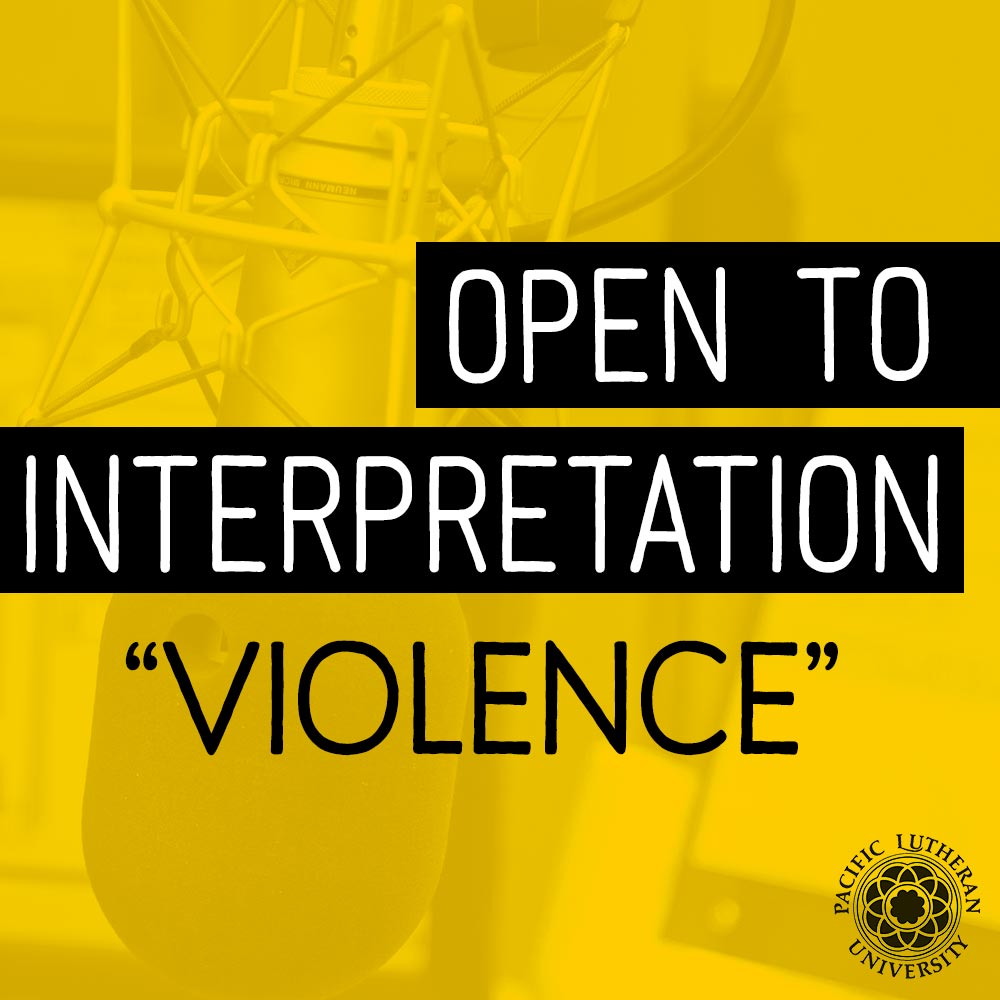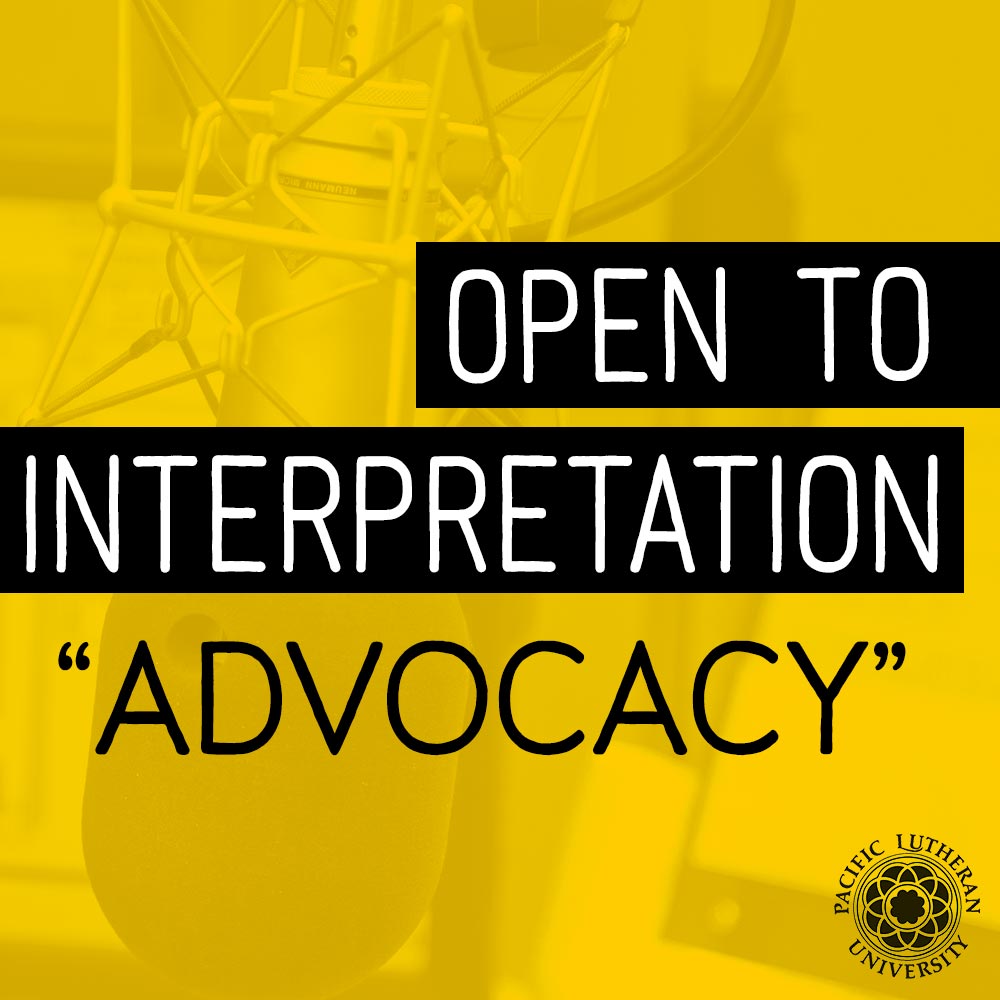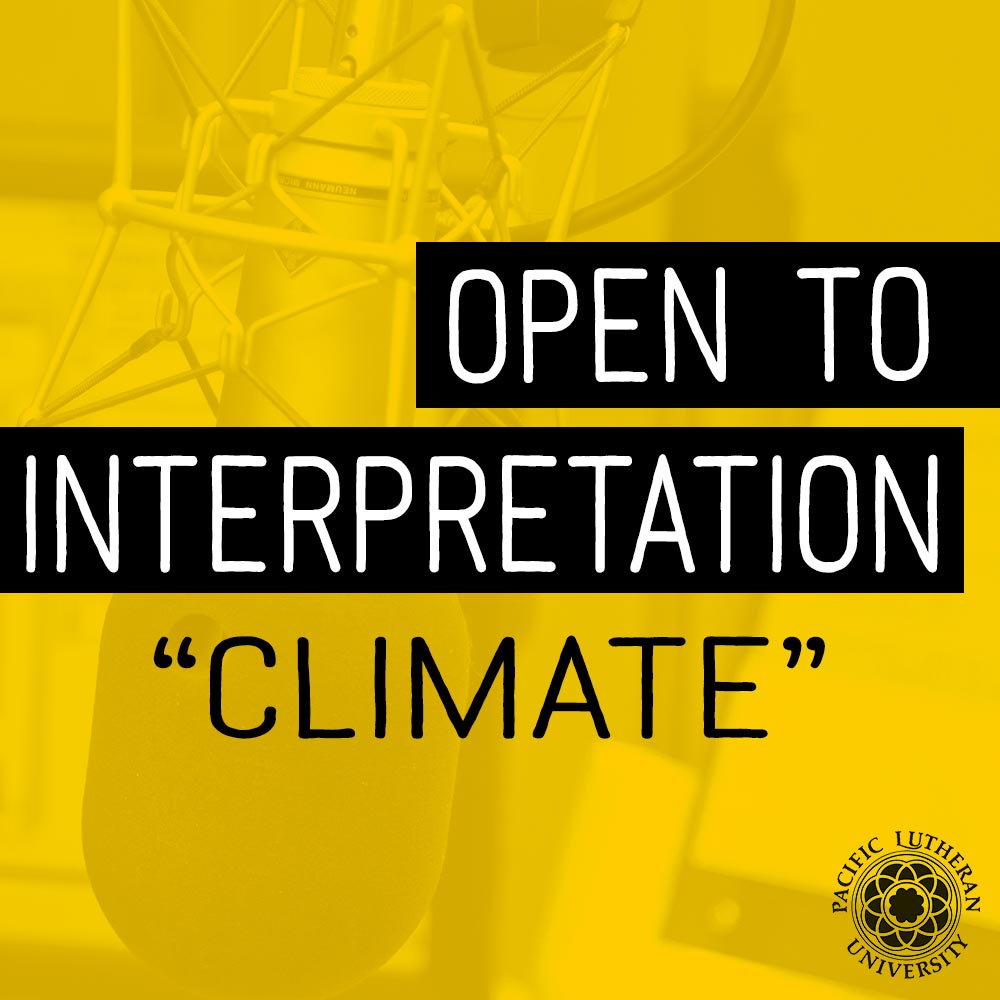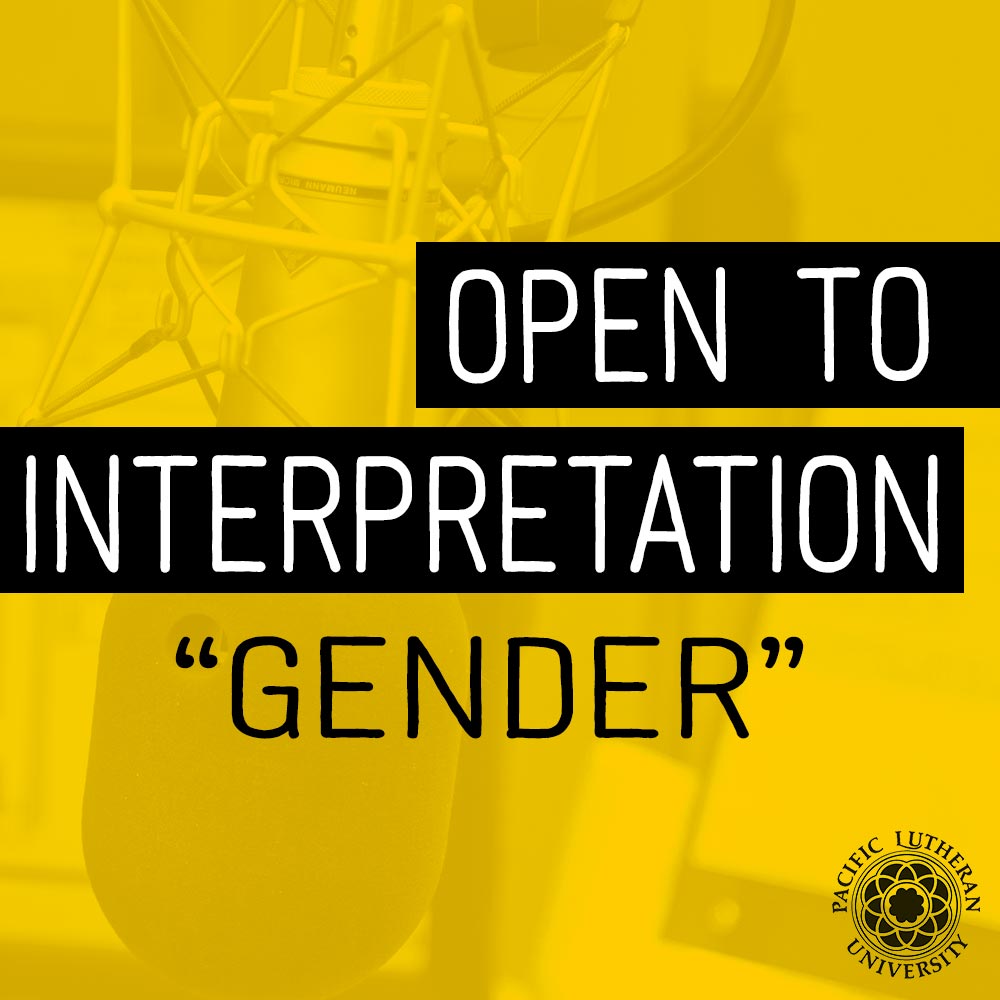Currently Reading:
PLU business, design and communication professors discuss the importance of “failure”
PLU business, design and communication professors discuss the importance of “failure”
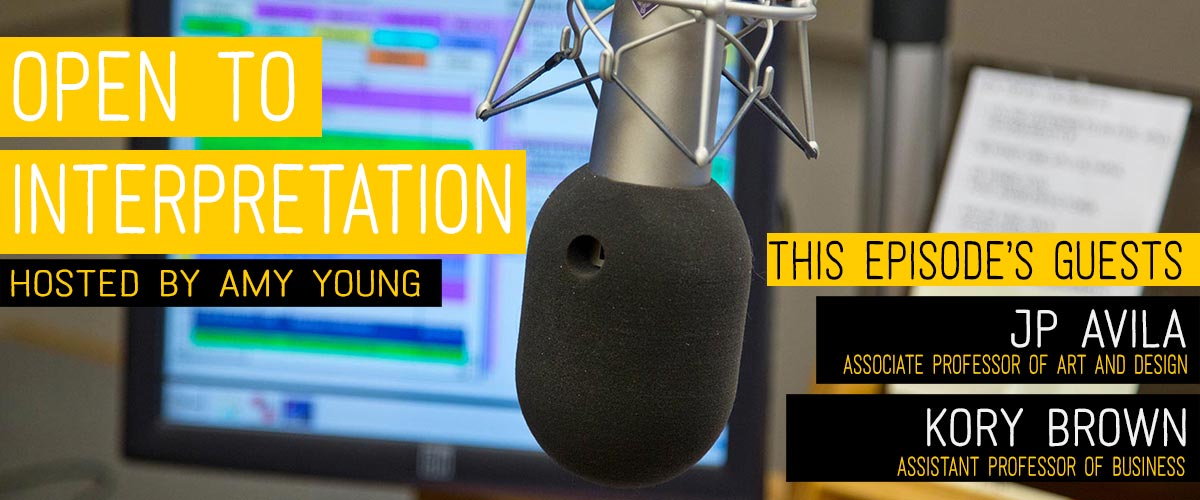
TACOMA, WASH. (April 6, 2016)-The seventh episode of “Open to Interpretation” features a discussion of the word “failure” among host and Associate Professor of Communication Amy Young, Associate Professor of Art and Design Jp Avila, and Assistant Professor of Business Kory Brown.
“Open to Interpretation” is a podcast devoted to exploring the meanings and implications of words commonly used in the news, on social media and on college campuses. Previous OTI topics include “Climate,” “Gender,” “Violence” and “Advocacy.” Episodes of OTI are released once per month. If you have feedback, comments or ideas for episodes, please email producer Zach Powers at powerszs@plu.edu.
Conversation Highlights
6:50: How can failure present a path to success?
10:00: Developing a “thick skin” for failure and the ability to problem solve following failure.
14:00: How can students develop persistence when facing failure. Should methods of learning from failure be part of college courses?
19:40: How faculty can help students navigate failure without “fixing it for them.”
27:20: Why is it so difficult to recover from failure?
28:55: Why Professor Avila tells so many of his students who are interested in attending grad school “perhaps not yet.”
31:10: Professor Brown shares about coping with failure as a business leader in the private sector.
32:55: Closing thoughts on failure.
| Amy Young: |
Welcome to Open to Interpretation. I’m Amy Young, associate professor of communication at Pacific Lutheran University. Joining me today are my guests, Professor Jp Avila, associate professor of art and design, and Kory Brown, assistant professor of business. Welcome, gentlemen. |
||
| Kory Brown: |
Thank you. |
||
| Jp Avila: |
Hi. |
||
| Amy Young: |
Good to see you this morning. The way that we work this is before we jump into our word, which is today, kind of a toughie, we do some warm up question just to get the juices flowing. Jp, what is your go-to breakfast and did you have it this morning? |
||
| Jp Avila: |
Well, my go-to breakfast is usually eggs and toast. Today, I had it. My daughter wanted eggs, toast, and bacon mixed into it. |
||
| Amy Young: |
Smart girl. |
||
| Jp Avila: |
I know. You can’t say no to bacon. |
||
| Amy Young: |
No. It’s the gateway meat. Kory, go-to breakfast and did you have it this morning? |
||
| Kory Brown: |
It’s usually a cold cereal buffet. I will bring out three or four boxes and pour little pieces or a little bit of cereal in there. Yes, I did have that this morning. |
||
| Amy Young: |
A mixer of sorts. |
||
| Kory Brown: |
Yes. Well, not all at the same time. I mean, I’ll have a small portion. Then, go to the next portion, get a little nice portion. Three or four bites of three or four different types of cereal. Yes, I did today. |
||
| Amy Young: |
Have you ever had the mini boxes of all of the sugary things like Fruit Loops? |
||
| Kory Brown: |
Absolutely. |
||
| Amy Young: |
That’s a fave. |
||
| Jp Avila: |
I heard that the millennials don’t like cereal because it’s too much work. I think that was on NPR this weekend or something like that. |
||
| Amy Young: |
Cereal is too much work? |
||
| Jp Avila: |
It was the washing the dishes. |
||
| Kory Brown: |
The alternative? |
||
| Jp Avila: |
I don’t know. I have a full extravaganza for breakfast on. I have no idea what it’s like to have only a dish to wash. |
||
| Amy Young: |
Wow. I don’t even really know how to response to that. Kory, would you rather sing a song or perform a dance in a room full of complete strangers? |
||
| Kory Brown: |
Most definitely sing a song. I’m not good at that but dancing is about as far away from my bailiwick as possible. |
||
| Amy Young: |
Do you have a go-to tune? |
||
| Kory Brown: |
No, not really. Well, I have done a little bit of karaoke, in small tiny bars in Japan. |
||
| Amy Young: |
Nice. |
||
| Kory Brown: |
No, I don’t have a go-to tune. |
||
| Amy Young: |
Jp? |
||
| Jp Avila: |
Are the lights on or off? |
||
| Amy Young: |
You know, I’m going to go with on. This is full out. Singing or dancing? |
||
| Jp Avila: |
Well, since I hate the sound of my own voice, I think I would probably go with dancing. |
||
| Amy Young: |
Interesting. I’m glad that even though you hate the sound of your own voice, you are here this morning. |
||
| Jp Avila: |
Yes. I know. |
||
| Amy Young: |
This is an odd thing to do for people who hate the sound of their own voice. If you could turn any book into a movie and know it would be a good movie, which book would you choose? Jp? |
||
| Jp Avila: |
There’s a book that I always have my students read, especially when they get to that phase of they’re either questioning their design or their design education or purpose. It’s called The Cheese Monkey. It’s by Chip Kidd who is this amazing graphic designer who designed a lot of book covers for Knopf. It is somewhat semi-autobiographical about his experience of going to art school. I won’t spoil it but if you find the book, the book translates visually very well into perhaps a motif for the movie. Think Wes Anderson, Charlie Kaufman movie about the book called The Cheese Monkey. |
||
| Amy Young: |
The Cheese Monkey. |
||
| Jp Avila: |
The Cheese Monkey. |
||
| Amy Young: |
Also, it’s a great penname, The Cheese Monkey. |
||
| Jp Avila: |
If you do look for it, try to find the hardback version. The paperback version, leaves a lot to be desired. |
||
| Amy Young: |
Writing that down. Kory, any book into a movie? |
||
| Kory Brown: |
I’m stumped. The first that came to mind were all of the Bourne books that I used to read 20 years ago were then turned into movies. I found those absolutely fascinating books. |
||
| Amy Young: | They were good ones. | ||
| Amy Young: |
I love all of Anthony Bourdain’s books. People keep trying to turn them into movies and the movies are awful. Awful, awful, awful. I guess, if it could be possible to actually make “Kitchen Confidential” or even “Medium Raw” into a good movie that’s what I would want to see. |
||
| Jp Avila: |
My first answer would have been The Martian by they already made that. It was a really good movie. I’ve read that book last year. It was last year and was enthralled that. |
||
| Amy Young: |
The bulk of our time then today is going to be spent on this word, which today is failure. That is a word that we maybe try not to talk about, but the idea is to take a word that’s common and public discourse or on social media or on campus and to pull it apart. I’m going to start by asking each of you how you would define failure. Kory, let’s start with you. |
||
| Kory Brown: |
Well, one can certainly go to the opposite or the antonym, the lack of success, but really, it’s some roadblocks, some inability to meet the expectations you’re striving to meet. |
||
| Amy Young: |
Jp, how do you define failure? |
||
| Jp Avila: |
Failure is what happens when you’re working. Failure is the things that I do on a daily basis. To me, failure is trying something out, finding that it’s not working, and then learning from that mistake and moving forward with it. |
||
| Kory Brown: |
That’s the positive side of failure. |
||
| Jp Avila: |
(Yes) it is actually the positive side. |
||
| Kory Brown: |
If you actually have interims and move forward after a failure. |
||
| Jp Avila: |
When I have a failure, I will have a stuck period, but then eventually, it’s, “I’ve got to work this out. I will figure this out!” |
||
| Kory Brown: |
Good for you to have that persistence. |
||
| Amy Young: |
How do you get unstuck? How can, for instance, failure become a path to success? |
||
| Jp Avila: |
I think in the things that I’ve done in my life. When I have come across or when I have experienced failure, the thing that has always moved me forward has been determination. It’s this will or drive that I will not let this be the end of me or I will not let this be the thing that stops me from doing whatever it is. I think it’s that drive and determination that has moved me forward from failure. I also love the idea that we learn from the experiences that we have. The only way that we can learn from experiences, or that at least I see that are teaching moments or thought-provoking opportunities for reflection later on, is from failure, is from learning that “I tried it this way and it didn’t work so I tried it a different way.” For me, having that opportunity to go in and experience all the different ways that it could have worked and didn’t, allows me to then go back and say, “Oh, okay. Well, at least I know that didn’t happen that way,” or, “I approached it from all different angles.” Sometimes, it just happens on the first try. |
||
| Kory Brown: |
Jp, where does that drive and the determination come from? I know from working with my own children, teenagers and young adults that sometimes they don’t have that drive and determination to be able to push beyond that incremental failure. Where does determination that come from? |
||
| Jp Avila: |
I think of it as two different things. I grew up Catholic soI have a lot of determination of strong will. I’m also a very stubborn person. I find that, speaking of children, that with my own daughter I can see her and I butting heads when we both want to do something a specific way and going back and forth with that. (It makes me wonder if) determination is a politer word for stubbornness. |
||
| Amy Young: |
It’s almost normal personality trait for you. |
||
| Jp Avila: |
I think so. At least for me. For instance, if I’ve seen students that have had that determination, it’s that they want to know what the answer is. They want that right answer or they want either a grade or they want the satisfaction of getting it right. |
||
| Kory Brown: |
If it’s a trait, is it teachable? |
||
| Jp Avila: |
I think in the case of wanting to get it right, it is. I think in the case of wanting some sort of success and fulfillment, it’s not. It is something that you already have. |
||
| Amy Young: |
That’s intrinsic to you. |
||
| Jp Avila: |
It’s an intrinsic quality that you either have or you don’t, but you can also be rewarded for failure. In that, I try and try and eventually, I will get it. |
||
| Amy Young: |
I think these are great questions that Kory is throwing back at you because I’m thinking about my own professional failures, my personal failures are legion. My professional failures, I’m thinking, when I first started trying to publish my writing, you have to develop a really thick skin about failure. You also have to be able to figure out, and it is kind of a problem solving issue like you’re talking about, Jp, where, “Okay, this thing didn’t work. Is it this thing that wasn’t working?” To try to suss out the mystery of what about an essay is it and not change the parts that are good about it. What do you control and what’s the thing that you adjust? I think, part of that is curiosity like you’re talking about and problem solving. Part of it is, I guess, figuring out how to develop a thick skin. I don’t know how you do that. |
||
| Kory Brown: |
There are different parts of that. There was a study that I published just last year, all about failure. In fact, it was oriented around entrepreneurial failure. In this study, we have several hundred people who we asked to describe entrepreneurial failure and to talk about it. It was just that open-ended in terms of the data gathering. We ended up with thousands of opportunities to code their statements. We found a few interesting things. We are able to actually cluster their statements into three major categories. One was very much an external attribution, the market was really bad, the economy really hurt my opportunity to be successful in my business. |
||
| Amy Young: |
A little scapegoating maybe. |
||
| Kory Brown: |
There are certainly was but there were two other clusters that formed that that were quite interesting. One was very much an internal or a personal piece, suggesting that the entrepreneur that they just don’t have it. They don’t have the emotional capacity. They can’t actually do it. Then, probably the third piece that I hadn’t really ever considered, a relatively large cluster of these statements were related to an interpersonal piece where, “My partner and I didn’t get along.” “We struggled on the personnel front.” The study which included both folks who had entrepreneurial experience and many who did not. It was interesting how we were able to frame them and cluster their statements into a variety of different areas. |
||
| Jp Avila: |
That’s pretty interesting. |
||
| Kory Brown: |
It actually was. (We found that) Those who have entrepreneurial experience actually talk differently than those who do not. They tend to use a lot more of those personal and interpersonal attributions or the explanations of failure than those who don’t necessarily have it. They’re able to absorb it and just give it more personal meaning. Even a very negative thing such as failure, they’re able to absorb it. Maybe the last interesting finding on that one is not only were those people able to express in personal and interpersonal ways, but they also rated failure considerably higher for the very same reasons. |
||
| Amy Young: |
An in more important? |
||
| Kory Brown: |
More favorable. They were happier with the failure experience. We asked them to talk about it. Why did you do that? |
||
| Amy Young: |
Interesting. |
||
| Kory Brown: |
The reason really comes right back down what Jp was sharing in this, that they learn from the experience. There was growth oriented to the experience. Those people with the experience, they were able to not only talk about it differently but they were able to take this very negative thing and see it in a more favorable light. |
||
| Amy Young: |
One of the things that we talk about on campus related to this in some ways is retention of students, persistence. Persistence is the word that is the buzz word for the difference between students who stay and go. To some degree, that’s not true. Of course, people leave for all kinds of reasons. They may go on to finish successfully someplace else. The notion of persistence, I think, is part of this because you have to have some motivation to keep trying. Have you thought about or do you build that into your teaching, ways for people to fail without failing the entire class, for instance, which is certainly always a possibility? |
||
| Jp Avila: |
I think for art and design, built-in failure is within the critique. There’s a chance to come in and say, “Here’s what I have thus far.” Whether that is, “It’s almost done,” or, “What they perceive is almost done,” or, “I’ve hit a road block and I can’t move on from here.” Giving them that chance to say, “Okay, here’s what’s working, here’s what’s not working. Here’s how to move forward with it.” |
||
| Amy Young: |
I know you do a lot of check-ins with people irregularly in order to give those critiques. Have you developed a voice for those critiques that you feel like helps people take the criticism and move forward? |
||
| Jp Avila: |
I think my former students in the last 11 years, the students I’ve had in the past, way past, have said that I was a much harder critique giver than I am now, that they appreciate the type of push that I gave them. I would use that air quote if you could see that but I would hold them in some sort of accountability that was greater than they had expected at the time. My current students, I think I’m a little bit more lenient on and that I ask more questions and I’m trying to pull out that nugget from them to allow them to think, “Oh, I can do it this way.” |
||
| Amy Young: |
More of a participatory approach almost in determining what is or is not working. |
||
| Jp Avila: |
Whereas before, I think my critique was either, “It’s not working and here’s what’s the problem.” Or, if they gave the critique, I would then be asking them questions of, “This is what you’re telling me it’s doing. This is what you’re saying it has. This is…, and so forth.” Then, allowing them to answer yes or no. Then, kind of feeling that yes or no as, “Oh, that’s a bad answer to that question,” or, “Oh, I should have thought more about how this would have reflected in that way.” Whereas now, I have a bigger conversation of, “I’m thinking that it should be this color, but I’m worrying about what are some other reasons that we could change the color for this.” And then having that process be participatory. |
||
| Amy Young: |
Is that a disciplinary issue? Kory, can you do that in your classes? Do you feel like there is a way to allow people room to fail without and that they feel like they could without thanking? |
||
| Kory Brown: |
I’m moderating a panel at a conference next week that’s on this very subject. |
||
| Amy Young: |
Interesting. |
||
| Kory Brown: |
What we’re examining is how extended the experience of learning is. Semester-long or multi-semester learning experiences actually provide sufficient time for both the failure, a meaningful failure that then they can recover from. In a way, we want to create this setting, the environment where they actually can fail. Academia is a very safe place to fail. Perhaps, more importantly, provide sufficient time for them to struggle through the recovery process with sufficient coaching and with the interaction that Jp is addressing here. |
||
|
For example, this last semester, I taught an entrepreneurship course. They started companies. They built products. They had to sell the products. They struggled through this idea of, “Nobody is buying my product,” and they had to go through the process of making changes to the products they were creating. They went through this multi-week, multi-month process of trying to get a business off the ground. They all made sales. It was online. You could go to their stores. You could buy their products. The response from the students really was, “I didn’t realized that I could recover from the failures that I was experiencing so early on. I thought it was going to be a lost cause,” that their ability to come back. We gave them months to really overcome that. It was, I think, a key to this exercise. In the end, it was fun because several of the teens made enough money. We donated large checks to local charities in the area. |
|||
| Amy Young: |
That’s great. |
||
| Jp Avila: |
Nice. That’s great. |
||
| Amy Young: |
I wonder if time is a factor. |
||
| Kory Brown: |
Very much. |
||
| Amy Young: |
Jp and I teach a lot of classes together and we spend a lot of time doing these critiques. We try to do them regularly enough that nobody has gotten so far a field that he or she cannot come back into the fold and recover in some way. Part of it, I think, is that if we’re super pressed for time, I wonder if we’re less likely to try to figure it out or just abandon the project. |
||
| Kory Brown: |
Abandon or fix it for them? |
||
| Amy Young: |
Exactly. I think that’s true. I think as a faculty member, it’s hard to hold yourself back and I’m also a parent so I think about this too, to hold myself back from trying to fix it for someone else. “No, no. If only you did this.” |
||
| Jp Avila: |
I found as my daughter started getting older and I have that fixing mentality as a parent, that I saw that translate into the classroom as well. “If you just do (this).” “How about if I just show you how to do it?” “Let me just do it like this.” |
||
| Amy Young: |
How about I do it once and then you try to do it? |
||
| Jp Avila: |
Actually, I decided that at one point that I had to get out of that mentality. I teach on illustrator, so for instance I would show them how to do a specific technique, but then I would delete the thing that I just did and start a brand new file for them so they couldn’t use it. |
||
| Amy Young: |
(So they wouldn’t) copy it. |
||
| Jp Avila: |
Just like, “Here’s what I did. Now, you do it.” That worked for a while, I would say. I’ve gotten past the doing it for them and giving examples, tutorials. I’m much more of the shower, not doer anymore as a parent. |
||
| Amy Young: |
Is that a temptation for you, Kory? Do you feel the need to fix? |
||
| Kory Brown: |
Less so. Maybe for the same reason. Parenting does take you down the path of letting a few mistakes happen here and there. You used the word “to go far afield.” I actually think there’s a great value in letting them go far afield. |
||
| Amy Young: |
Sure. |
||
| Kory Brown: |
Where you talked a little bit about regular critique, maybe holding off on that critique just a little bit longer to get to that point of despair almost to a point, there, we got despair and hope which could be translated a bit into this idea of success and failure. |
||
| Amy Young: |
Sure. |
||
| Kory Brown: |
You just want that emotional piece in our training here because once they leave the safe walls of our institution, it’s not quite so safe. If you can get them that far, then be able to cast the line out there and pull them back in a bit, I think that’s powerful pedagogy. |
||
| Jp Avila: |
Have they come back and mention that to you that it was important? That ability to fail, and then understand how they felt and recover from that. |
||
| Kory Brown: |
Not necessarily in the one class I referenced earlier, but yes from a mentoring standpoint, Those are the kinds of letters that I love to get. Past students have highlighted, “wow, what you caused us to go through is relevant to what I’m experiencing in so-called real life.” |
||
| Amy Young: |
I think that’s true. I usually begin my classes by talking about the fact that this is the closest to a laboratory setting you’re ever going to be in. If you have the opportunity to experiment, consider this the opportunity. You’re not going to get fired. I’m not asking you to win the business (competition) or land the deal. You can go ahead and try. |
||
| Kory Brown: |
I have this classic little exercise that I’ve done a few times. Most everyone can do a sit-up, but if you get someone out to do a sit-up and you put a pole between back behind their neck and in the front of their elbows and say, “Do a sit-up with nobody holding their feet,” most people can’t do it. You set them up and say, “Hey, can anyone do a sit-up?” Of course. Then, they come up and then just that one little piece there and they’re just struggling mildly to do a single sit-up. I use that simple experience to highlight how even small failures shouldn’t be discouraging for them. |
||
| Amy Young: |
Do you think that the stigma around grading, I mean, the fact that people are so concerned about grading at the college level but let’s say, evaluation professionally, that part of all professional activity is, in some ways, receiving evaluations. Wither those things are formal or informal, yearly or more frequently, whenever it is. Is there a stigma around failing your evaluation that changes the way people see failure, that makes people see failure as consistently negative? |
||
| Jp Avila: |
It’s funny actually. I had this experience in my classroom just yesterday. We had a critique and I mentioned to two students who I made a comment. They took it and just started going down this downhill spiral of all the things that was wrong with their project. I stopped them and I said, “Don’t worry about that. Worry about what was right about the project. Worry about what we’re able to accomplish.” Then, they started asking me those questions of what I would have done. I’m like, “Would you rather get a good grade or would you rather get it right? Because you can have one or the other.” I’ve been thinking about that since that critique because I told them, “You’re the one who gets the good grade and should want to get the good grade, but the important thing is to get it right.” |
||
|
The reason why I gave that example to them was because you can chase the grade, you can do whatever I tell you to do because I told you that’s what you’re going to get. If you do this, you’ll get the A. If I tell you, turn it green, turn it green. To do it right is based off with a research, it’s based off of your experience, it’s based off of that gut feeling of, “If I don’t turn it green but I turned it yellow,” I’m just using examples here, but turning it yellow, it’s going to bring the audience, that’s going to make a successful product, that’s going to be the right choice, the right design. |
|||
| Amy Young: |
Because they’re starting to connect up research with behavior. |
||
| Jp Avila: |
As well as experience. They’re learning that, “I’ve tried green before in the past and it’s just not working but I’ve noticed that yellow is a better solution to that.” |
||
| Amy Young: |
Learning to adjust the lens through which you view the project. |
||
| Kory Brown: |
I think that stigma creates more conservative behavior, more norming behavior. Sometimes, we actually would prefer something exactly opposite of norming behavior. Getting students to push beyond it. Interesting pieces. We looked at a whole series of entrepreneurship-oriented books and we just looked for the words failure in these books. It was always addressed near the end of chapter one as something to be avoided at all cost. It’s the way it was always addresses. |
||
| Amy Young: |
That’s why you’re buying the books, is you can avoid failure. |
||
| Kory Brown: |
Then (failure is) not addressed for the rest of the book. Maybe a few pieces. Oh, by the way, there’s such a thing as serial entrepreneurs, people who will fail once and then try it again and keep trying it again. I think that’s actually a disservice to our students, is to not address the subject head on. They suggest that failure is a part of the growth. It’s part of the process of becoming a professional, becoming a contributing member of society for that matter. Shame on our textbook writers. |
||
| Jp Avila: |
There’s a great quote by Adam Savage who says, “Failure is always an option.” I really like that. |
||
| Amy Young: |
How difficult is it to understand what failure means but be forgiving of yourself when you fail? |
||
| Kory Brown: |
It’s difficult. I will answer the question straight on. It absolutely can be difficult when we establish our own worlds, our own framework, whatever we’re guiding ourselves to and missing the mark. We don’t all have the dogged determination of Jp to just be able to push beyond that failure and overcome it. |
||
| Amy Young: |
The Catholic will. |
||
| Kory Brown: |
That’s right. |
||
| Amy Young: |
You have Catholic will. Why not forgiveness, Jp? |
||
| Jp Avila: |
I refuse to talk about this. |
||
| Amy Young: |
I think it’s easier to forgive our students. We have an easy time offering other people grace for their failures than, or I do, and I think, “Oh, of course you should fail and get back up.” Then, when I do it, it’s a different … |
||
| Jp Avila: |
I think that’s why I’m hesitant to try to figure out, “What is that right answer? What is the thing that … Is that gem of what I use to get past that failure?” I don’t know. Like I told Kory to begin with, that’s just that determination but it takes times. Fail on Monday, I’m not right back on it on Tuesday but I’m at it, I would from Thursday. Maybe, I’m thinking about it and then moving forward from there. |
||
| Kory Brown: |
Can a trophy generation, where you get a trophy for participating, do that? Can they have that determination to move forward? |
||
| Jp Avila: |
I think eventually but just like grad school, you have to be beaten down in order to grow. I tell a lot of my students that are thinking about grad school that perhaps, not yet. You’re just not ready to fail. You’re just not ready for that kind of being brought down to that core principle of who you are. Then, work your way back up. I think that to me, grad school was like doing ceramics on a wheel, the throwing wheels. If you’ve ever done the throwing wheel, it is hard to center. Eventually, once you figured out how to center the clay, you’re able to then form it, but forming it, it takes a lot. You always going back down to just a mash, just down to the puddle. From there, you’re working your way back up and you’re working your way back up. |
||
|
You’ve got to start at the bottom. You got to be able to center in the middle of it. Grad school is somewhat that. You start off as this big chunk of clay, but until you can get into the middle of it, you can’t really do anything with it. I think that a lot of students, the trophy generation, are told, “Well, you did a great job about that.” “Okay, why don’t you try it?” |
|||
| Amy Young: |
You showed up. |
||
| Jp Avila: |
You showed up for it. You participated as much as you’re supposed to. You gave that bare minimum of whatever it was. Having that mentality throughout your entire life and then going into grad school and being told, “You have to do it this way. You have to learn these things. You need to expand beyond your comfort zone,” is a hard thing to do. Even for me, I tell to the students who were thinking about grad school, is that, “I waited two years after undergraduate. I worked and I don’t think I was ready still. I was hungry for it. I want that grad school. I wanted more knowledge but I was not … ” Then, I think this is maybe more my personality, I was too stubborn for grad school. It wasn’t until the end until I allowed myself back down to the middle of that puddle of clay to then be re-centered. I then flourished very quickly from that. It takes willingness. |
||
| Amy Young: |
Well, and openness to allow yourself to be vulnerable to somebody else’s guidance. |
||
| Kory Brown: |
I love that analogy. I spent a couple of decades in the technology industry and ran large companies. There were times where I made decisions that were catastrophic in failure. Tens of people lost their jobs because of decisions that I made a few years earlier that I weren’t able to execute too because I always had a chance to be at the forefront of technology. When you’re at the forefront of technology, you’re guessing some of the times. |
||
| Amy Young: |
Yes you are. |
||
| Kory Brown: |
You can do all of the strategic and analysis work and all of those pieces but you’ll place a bet and you’ll spend 10 million dollars. When it doesn’t come through, people lose their jobs. That’s painful. When your decisions are not only affecting yourself, affecting the livelihood of tens of other families is a painful professional experience that the one has to work to. |
||
| Amy Young: |
I also think, at least for me, and I don’t know maybe for other people, maybe this is a place to start in terms of this next generation of adults. Is that a lot of it, I think a lot of the motivation is extrinsic until it becomes intrinsic, that it’s the sort of fake it until you make it thing. The idea that you keep trying in some ways because you have to. There no another option. You will either get fired, you won’t get into grad school, you won’t finish grad school, whatever it is, you won’t be good at this job. You won’t get tenure. Whatever it is that you’re trying to do, you won’t, you won’t, you won’t, if you don’t just keep going. Part of it is the ability to recognize there are external forces at work. It’s okay to be motivated by those things until you figure out whatever it is that is inside you that moves you to. Last word on the word. Kory, anything else to say as we wrap up on failure? |
||
| Kory Brown: |
I do. I actually do have great hope for this generation. |
||
| Amy Young: |
That’s great. I like your optimism. |
||
| Kory Brown: |
I do. I’ve had a chance in a religious setting for a number of years to work with teenage youth. Then, of course, professionally, I get to work with young adults. I do see that very progression. I do see the ability for people to recognize that they do need to own it. Especially at this 22, 23, 24-year old age, it’s such a ripening age. When I come to class and see the, “Oh, I did it,” not get it in terms of the material that I’m trying to advance but, “Oh, I get it,” in terms of how to create real self-driven personal development, when I see that, and most of the classes that I teach are capstone courses so I do get them at the very end. |
||
| Amy Young: |
You get to see the one that made it. Persistence. |
||
| Kory Brown: |
Perhaps it is that very reason that I just have tremendous hope that we will see a whole lot more success than failure. |
||
| Amy Young: |
Good. I like that. Jp? Beat that? |
||
| Jp Avila: |
I don’t know if I can beat that because I, too, feel hopeful that failure breeds success. I feel that students are becoming much more interested in knowing perhaps our own failures as faculty or our own struggles as faculty and learning from that that, “Here is someone who is successful in what we do.” You know, you, me, Kory. From that, there’s the stigma or there’s this perception that of course, they’re good at it because they’re always been good at it. They always do these things, allowing that curtain to fall and say, “Okay, you know what? I didn’t do this. I failed this class. I didn’t get this.” I didn’t fail a class by the way. |
||
| Amy Young: |
Of course. |
||
| Jp Avila: |
I was a perfect A student all the way through. Learning that there’s failure in the things that we do in life and that even on a daily basis, that there are little things that happen that are course corrected, is an important part. It shows that we’re all human, that humanity has an ups and downs. Hopefully, the students see that as a opportunity to say, “Oh, okay. You can do it like that. I can do it like that,” or, “You can do it like that. (But) I can do it better than that.” My hope is always that it’s that they want to be better than I am.
|
||
| Amy Young: |
I think that’s a little bit of bravery. Be brave enough to fail. We ask big enough questions on this campus which should have big enough failures. |
||
| Jp Avila: |
There is a movie I saw on Netflix once called Art & Copy. |
||
| Amy Young: |
I’ve never seen that film. |
||
| Jp Avila: |
It’s about the advertising world. They interviewed, I think it’s Wieden and Kennedy in Portland. They’ve done a lot of different amazing ads over the years like the Nike ad and stuff like that. They did a project where they created a wall that said, “Fail harder |
||
| Amy Young: |
I think you showed me this. |
||
| Jp Avila: | I probably have because I love this video. It goes back to the idea what do you want? Do you want a good grade or do you want to get it right? They project it on the wall. They drew it out. Then use pushpins to spell out “fail harder.” Instead of doing the internal space of the letterforms, they did the external space, a negative space in it. They used 200,000 pushpins on a 12 by 10 wall in order to make the word fail harder be the wall and the rest of the wall is actually pushpins. You could have done the easy route of doing something amazing, does something beautiful in pushpins but they took the harder route of doing it the entire wall except the letter forms. I think that to me, I hope that’s the future, is that students will see, “Okay, I could do it this way but I could really show you how to do it if I do it along that way.” That comes from seeing how other people have tried things in the past or the way that you would do it and say, “A few would do it like that. Then, I’m going to do it like this.” | ||
| Amy Young: |
Ironically, I think this has been a great success. I thank you for being with me, Jp Avila and Kory Brown. |
||
| Jp Avila: |
Thank you. |
||
| Kory Brown: |
Thanks. |
||


